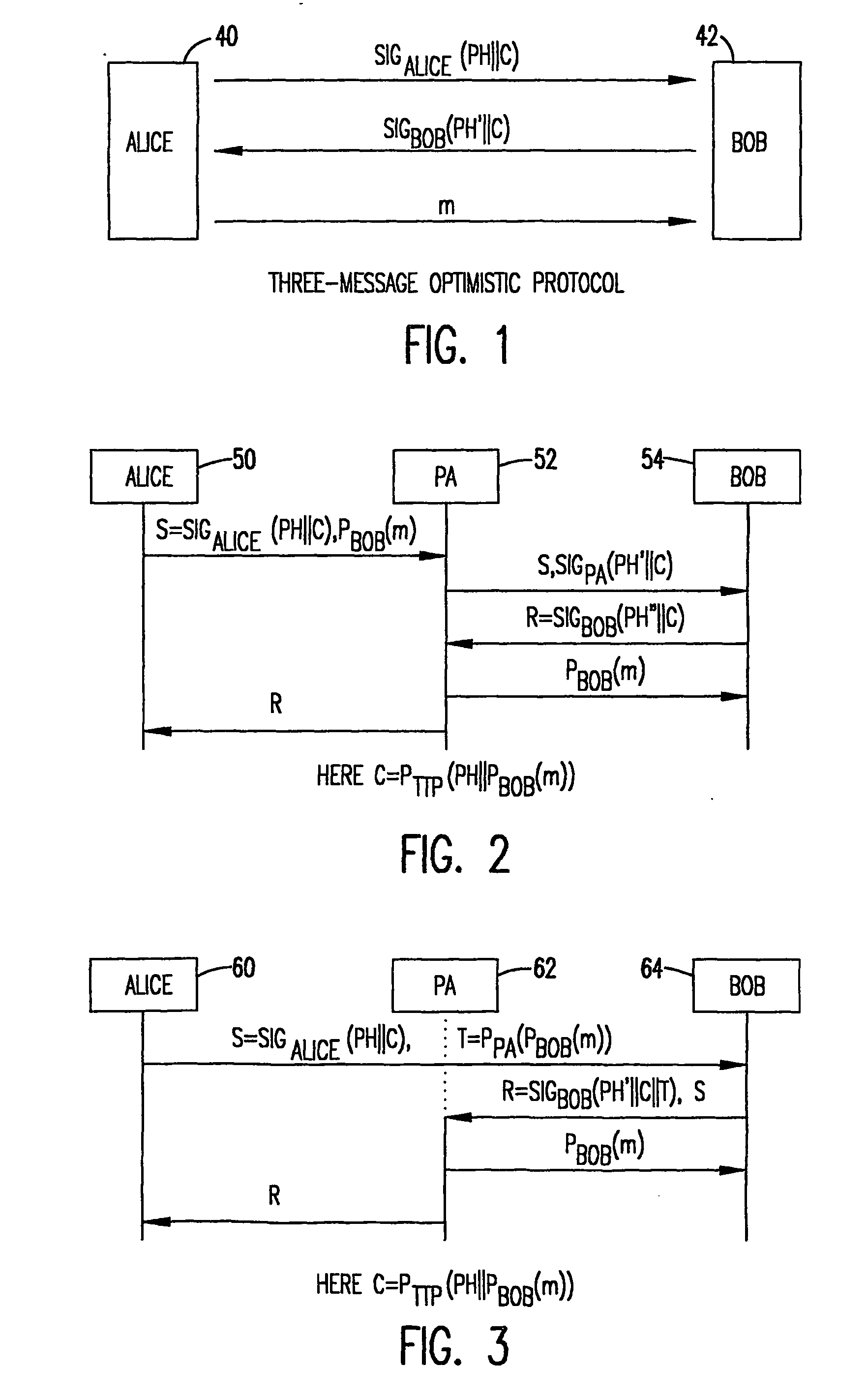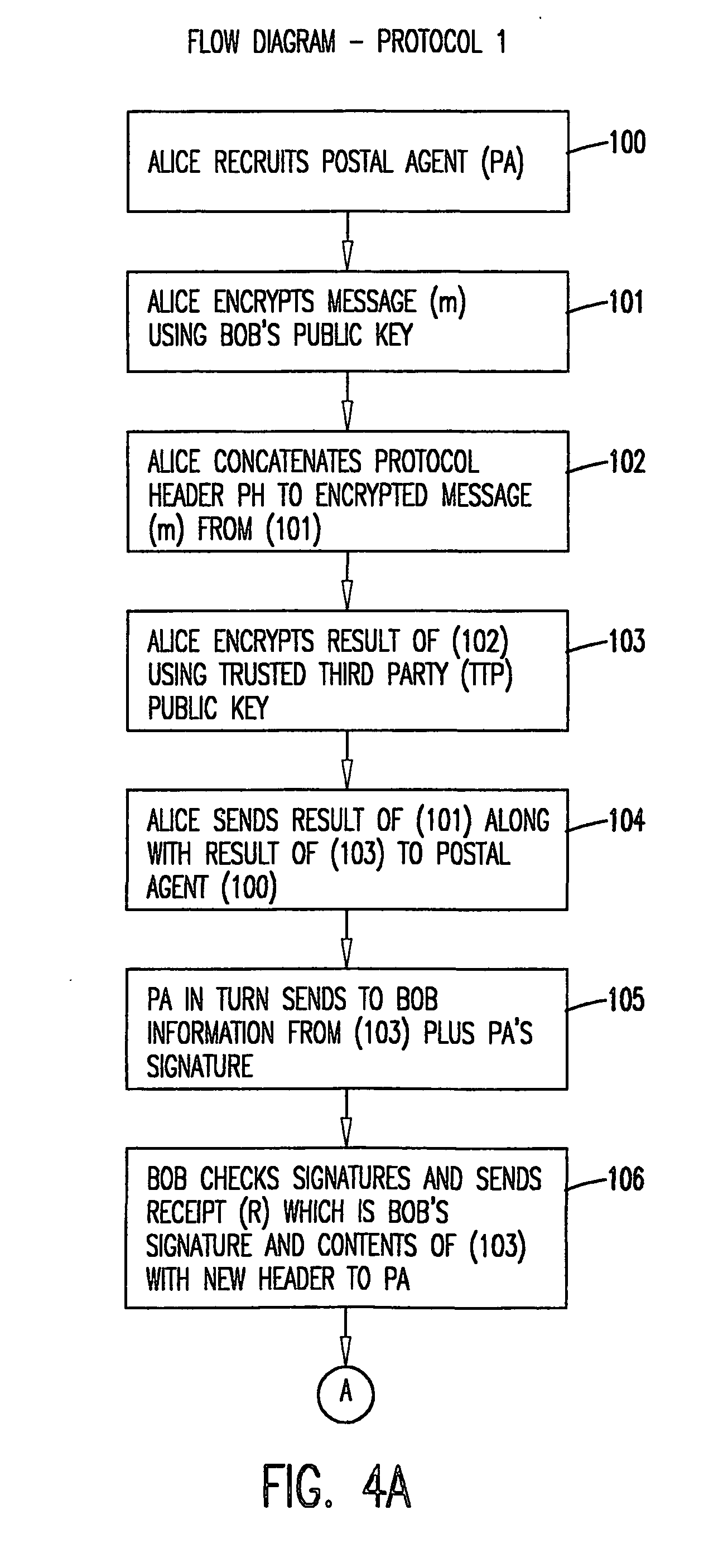Intermediated delivery scheme for asymmetric fair exchange of electronic items
- Summary
- Abstract
- Description
- Claims
- Application Information
AI Technical Summary
Benefits of technology
Problems solved by technology
Method used
Image
Examples
Embodiment Construction
[0037] The invention is directed to a method and system for the fair exchange of electronic information. The invention has particular application to a certified e-mail service which uses cryptographic tools to provide proof that a particular message was delivered between two parties at a certain time. However, it should be understood that invention can be adapted for use in a variety of methods and systems where it is necessary to assure that two parties in an electronic transaction are provided with a fair and confidential means of exchange. The invention is designed to achieve the following.
[0038] Fairness: No party should be able to interrupt or corrupt the protocol to force an outcome to his / her advantage. In any instance of the protocol, it should terminate with either party having obtained the desired information, or with neither one acquiring anything useful.
[0039] Monotonicity: Each exchange of information during the protocol should add validity to the final outcome. That is...
PUM
 Login to View More
Login to View More Abstract
Description
Claims
Application Information
 Login to View More
Login to View More - R&D
- Intellectual Property
- Life Sciences
- Materials
- Tech Scout
- Unparalleled Data Quality
- Higher Quality Content
- 60% Fewer Hallucinations
Browse by: Latest US Patents, China's latest patents, Technical Efficacy Thesaurus, Application Domain, Technology Topic, Popular Technical Reports.
© 2025 PatSnap. All rights reserved.Legal|Privacy policy|Modern Slavery Act Transparency Statement|Sitemap|About US| Contact US: help@patsnap.com



